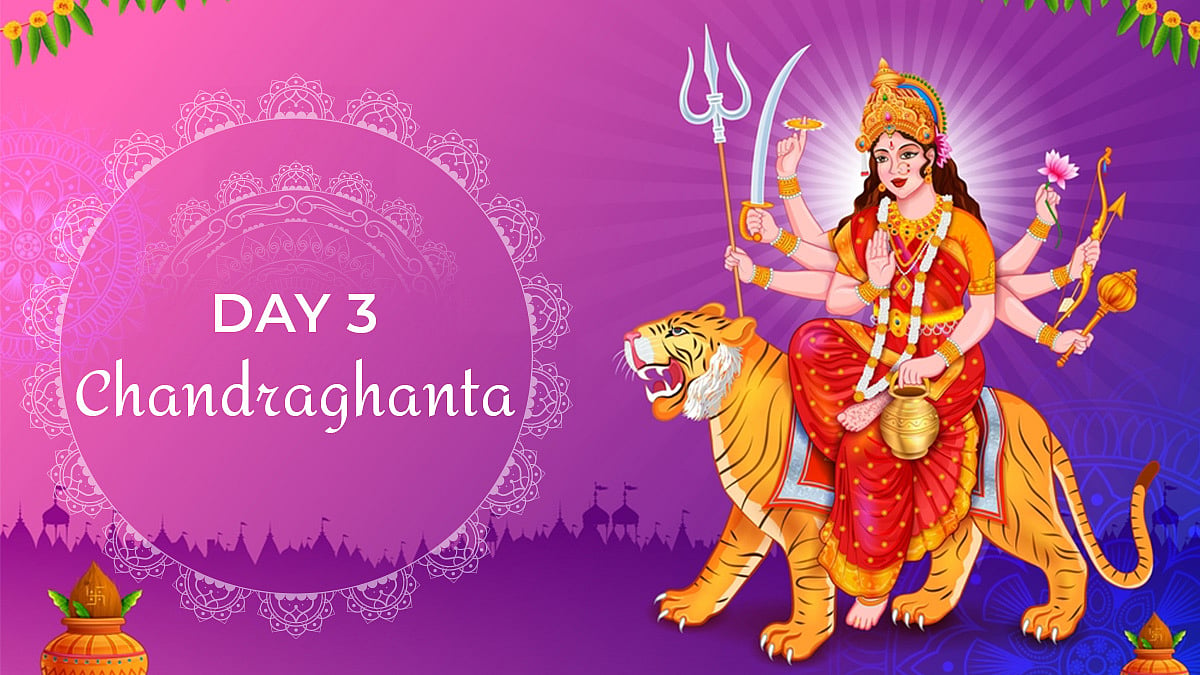Chaitra Navratri is a nine-day Hindu festival dedicated to the worship of Goddess Durga and her nine forms. It is observed in the Chaitra month (March-April) of the Hindu lunar calendar and marks the beginning of the Hindu New Year in many regions. In 2025, Chaitra Navratri is celebrated from March 30 to April 7.
Navratri is a significant Hindu festival that honors Goddess Durga. It occurs four times a year, with Chaitra and Shardiya Navratri being the most well-known. The other two Navratri celebrations are less recognised. The third day of Navratri is dedicated to the worship of Maa Chandraghanta.
It is believed that by worshipping her, devotees can cleanse themselves of their sins and alleviate their fears in life. Let’s explore the origin of the name “Chandraghanta” for this third form of Maa Durga, what offerings to make as bhog, and other related details.

Chaitra Navratri 2025 | YatraDham
Maa Chandraghanta is the third manifestation of Goddess Durga, worshipped on the third day of Chaitra Navratri. She is named Chandraghanta because of the crescent moon (Chandra) on her forehead, which resembles a ghanta (bell).
She is known as the Goddess of Peace and Serenity but also symbolizes fearlessness and bravery. Worshipping her removes obstacles, fears, and negativity from life.
She blesses her devotees with courage, grace, and strength.
Her worship helps in removing sins, sufferings, and evil forces.
Devotees believe she grants spiritual awakening and divine vision.
Her bell’s sound is said to ward off evil spirits and negative energies.
Which Colour Is followed on Navratri Day 3?
The form of Chandraghanta is worshipped on the third day, representing the married aspect of Goddess Parvati. Her name is derived from the half-moon on her forehead, and the colour associated with this day is red. The colour represents courage, strength and power.
To seek the divine blessings of Maa Chandraghanta, devotees follow these rituals:
Morning Bath & Sankalp: Begin the day with a holy bath and take a pledge (sankalp) to worship the Goddess with devotion.
Kalash Sthapana: If not done on the first day, establish the Kalash (sacred pot) for Navratri puja.
